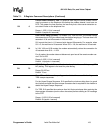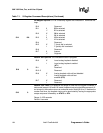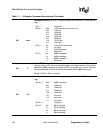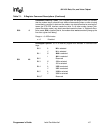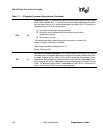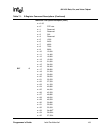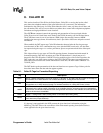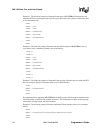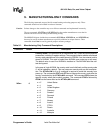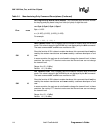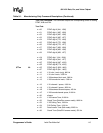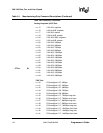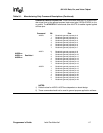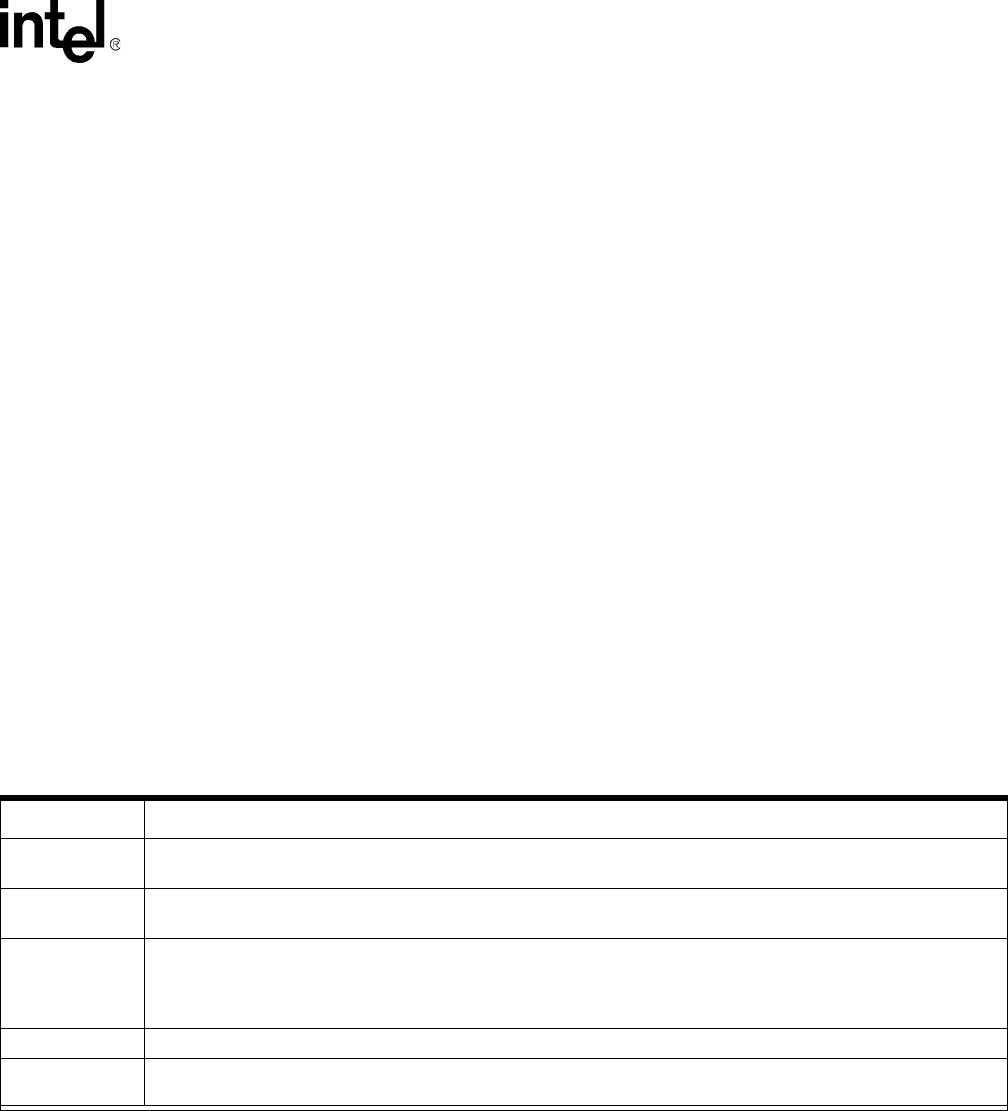
56K V.92 Data, Fax, and Voice Chipset
Programmer’s Guide Intel Confidential 111
8. CALLER ID
This section describes Caller ID for the United States. Caller ID is a service that lets the called
party know the telephone number of the caller before the call is answered. The information
transmitted to the called party via Caller ID includes the caller’s name, call date, the call time, and
the call number. This service is not available everywhere due to central office telephone equipment
limitations and legal prohibition in some locations.
The +VCID = n command controls the reporting and presentation of data associated with the
Caller ID services in United States and Canada in the ICLID (incoming call line ID) data format.
The ICLID data comes in one of two formats: SDM (single data message) format or MDM
(multiple data message) format. In both formats, data is provided as data items and packet control
information.
When enabled, the DCE reports any Caller ID information detected after the first ring message
(note that more <CR> <LF> combinations may occur after the RING result code). All data items
are reported using the <tag> <=> <value> pair format. Spaces are present on both sides of the equal
sign.
This chipset allows for two types of Caller ID reporting formats, formatted and unformatted. In
formatted reporting, DCE does not report any Caller ID information if a check sum error is
detected in the Caller ID packet. If the DCE receives multiple copies of the Caller ID packets, the
DCE sends only one of the correct packets to the DTE. If the DCE has never presented a correct
packet but has received the line seizure information at least once, the DCE returns <MESG> <=>
<CALID_202>.
The DCE breaks up the presentation of the date and time into two separate <Tag><Value> pairs for
those data items where the date and time appear together.
If a data tag is unrecognizable, the DCE presents the given data item’s information using the
MESG tag. The DCE follows the conventions of the unformatted reporting form (defined below)
where applicable for the given data item only.
Table 8-1. Caller ID Tags for Formatted Reporting
Tag Description
DATE
DATE = MMDD where MM is the month number, 01 through 12, and DD is the day number, 01 through 31.
All numbers are in ASCII decimal. For numbers less than 10, a filling ASCII zero is used.
TIME
TIME = HHMM where HH is the hour number, 00 through 23, and MM is the minute number, 00 through 59.
All numbers are in ASCII decimal format. For numbers less than 10, a filling ASCII zero is used.
NMBR
NMBR = <number> or P or O (ASCII 4Fh) where <number> is the telephone number of the caller, where P
indicates that the calling number information is not available since the originating caller has requested pri-
vate service, and where O indicates that the calling number information is not available since the out of area
code or the service is unavailable.
NAME NAME = <listing name> where <listing name> is the subscription listing name.
MESG
MESG = <data tag> <length of message> <data> <checksum> in printable ASCII (to avoid possible prob-
lems with binary output numbers).



